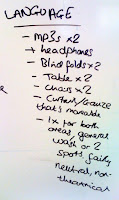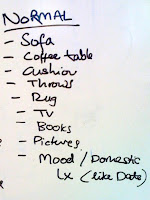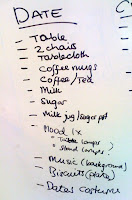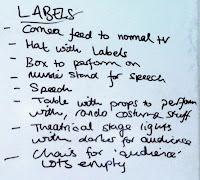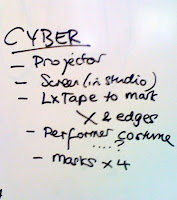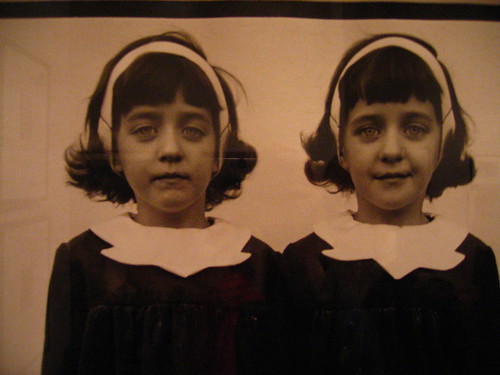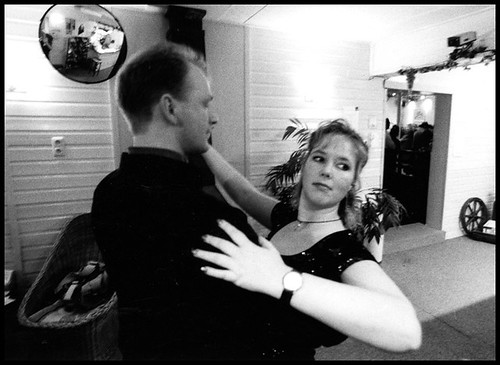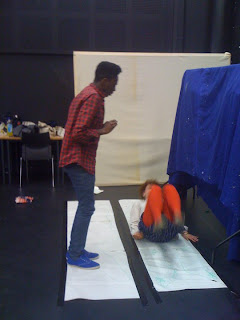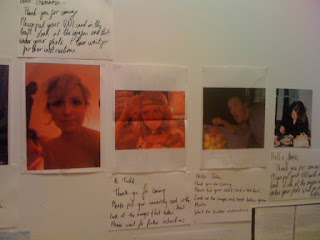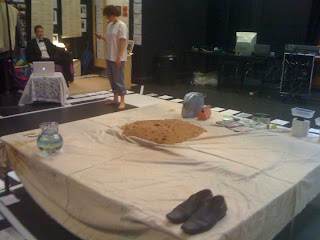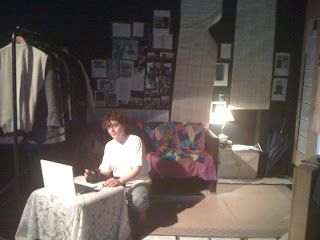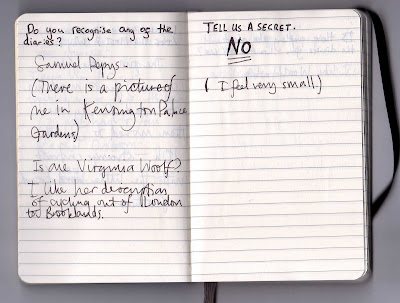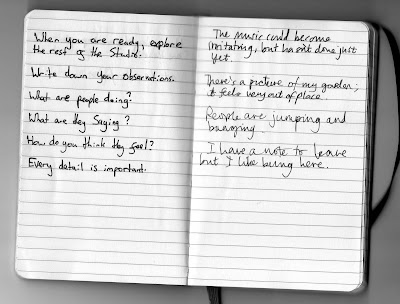As well as the application of theoretical texts, we have always been looking out for any artistic texts and pieces that have relevance or can give us any further inspiration for the devising process.
Christina Rossetti
After Death
 I felt this poem is beautifully echoed the themes of the location of the self within society and within relationships, as well as the feelings of the disembodiment of the mind from the body, in Rossetti's case through death, or in our case through the development of social networking.
I felt this poem is beautifully echoed the themes of the location of the self within society and within relationships, as well as the feelings of the disembodiment of the mind from the body, in Rossetti's case through death, or in our case through the development of social networking.The curtains were half drawn, the floor was swept
And strewn with rushes, rosemary and may
Lay thick upon the bed on which I lay,
Where through the lattice ivy-shadows crept.
He leaned above me, thinking that I slept
And could not hear him; but I heard him say:
"Poor child, poor child:" and as he turned away
Came a deep silence, and I knew he wept.
He did not touch the shroud, or raise the fold
That hid my face, or take my hand in his,
Or ruffle the smooth pillows for my head:
He did not love me living; but once dead
To know he still is warm though I am cold.
Samuel Beckett
Not I
This Beckett play was also particularly influential in generating our thoughts towards the language square, listening to the rhythms of the speech patterns, the breaking down of language into the fundamental shapes and sounds, as well as the disembodiment of the self and ideas of the other.
- Muscle memory
- Spark of memories, convoluted, circularity
- Mouth as a muscle reflex
- Mouth at odds with self, can't express the self within, battle between soul and body
- Memory can't exist without mind but mind can construct a memory
- Violation of her being trying to disassociate herself
- Communication, speech thought
- Half on identity as an idea
- Body vs mind
- Master vs slave
- Playwright vs actor
- Place creates identity limbo
- If I can only be masculine, Not I is the feminine
Steve Reich
These videos have been particularly influential in thinking about the ways our identity pieced together with all these fundamental elements of language and communication, to what we pick from influences such as the digital age and age of commericialism and industry, as well as from all the little rituals we do everyday. As well the beauty of his music, these videos and the music are also fascinating in their use and exploration of repetition and the patterns he creates.
On his work, Steve Reich writes:
The overall texture is made up entirely of multiples of the same timbre, which texture highlights the overall contrapuntal web with its many resulting patterns which the listener can hear. That is to say that my early works like Violin Phase and Piano Phase were written for multiples of identical instruments because if, for instance, in Piano Phase I play piano and you play harpsichord or synthesizer we will hear the separate timbres moving out of phase... Thus, multiples of identical instruments with the same timbre were acoustically necessary in my early pieces to create the overall contrapuntal web and particularly the ambiguity as to where the downbeat is...This layering and building up of the same thing over and over again to create something else, unified and yet ambiguous, is particularly inspiring when considering the ideas of ritual and how some small, minor things that we repeat everyday can build up and become inherent in who we are.
The dance in this video is also particularly inspiring for the same reasons. Indepedent journalist Jenny Gilbert reviews the performance, also performed at Steve Reich's 70th Birthday celebrations:
First off the block was the Belgian Anne Teresa de Keersmaeker with her response to Reich's austere early period. Someone within my hearing likened its effect to being hit repeatedly over the head with a spoon, and there's no disputing that Piano Phase and Violin Phase, both composed in 1967 and relayed, by necessity, on tape, are maddeningly insistent - that's the point. Both are abstract formal studies which play with the electronic technique whereby a repeated melodic pattern is split into layers which gradually and sneakily fall out of synch and diverge.
While Jenny Gilbert isn't a particular fan, this dilemma of the music either being hypnotically repetitive and enchanting or of being excruitatingly irritating is also something worth exploring, perhaps a chance to see whether we are easily annoyed by the repetitive and want to escape the rut the music and movements show or in fact whether we find comfort in the rituals we live by.
Keersmaeker is happy not to meddle with this format, and offers us its visual match: two figures (Keersmaeker herself and Tale Dolven) in a repeated pattern of arm-swinging walks and revolving turns. With their grey frocks, ankle socks and disengaged expressions the pair have the air of faintly naughty schoolgirls, particularly when they allow their frocks to flip up to show their knickers, the rhythm marching on unbroken.
Texts & Links
- Rossetti, Christina, After Death, 'The Broadview Anthology of Victorian poetry and poetic theory', Ed. Thomas J Collins & VivenneJ Rundle, Broadview Press Ltd. 2000
- http://i.telegraph.co.uk/telegraph/multimedia/archive/01184/arts-graphics-2008_1184484a.jpg
- http://www.youtube.com/watch?v=AUyXQ82YhTk
- http://www.youtube.com/watch?v=JYRykV6gjh4&feature=related
- Reich, Steve, Texture-Space-Survival, 'Perspectives of New Music', Vol. 26, No. 2 (Summer, 1988), pp. 272-280, http://www.jstor.org/stable/833197
- Gilbert, Jenny, Dance To Music by Steve Reich, Barbican London, Independent Online, 8th October 2006, http://www.independent.co.uk/arts-entertainment/theatre-dance/reviews/dance-to-music-by-steve-reich-barbican-london-br-marjories-world-unhinged-gardner-arts-centre-brighton-419209.html


